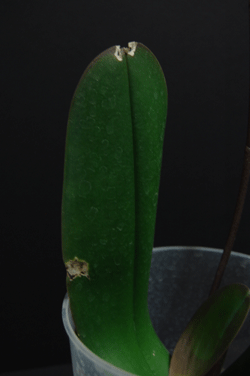
The main causes of orchid diseases are poor culture and growing conditions. In order to prevent these diseases, you need to provide a clean environment, proper watering, and good air movement. Nonetheless, prevention measures are not always effective, and orchids can get sick sometimes. When your orchids are affected by diseases, you have to identify the diseases immediately and take the right measures to control them before they become incurable. Here are the most common diseases affecting phalaenopsis orchids:
The characteristics of fungal leaf spots vary from one pathogen to another, and they can range from yellow or brown spots to sunken spots. Most spots will become darker and larger with age. If your phals have small water-soaked and yellow-haloed spots, they are affected by the Erwinia bacteria. This infection can spread quickly and lead to rotting within just a few days. Bacterial brown spot, on the other hand, is caused by acidovorax or pseudomonas, and it appears initially as a soft dark spot, but becomes larger and dries up over time. It will kill the orchid if it reaches the crown of the plant.
If there is a leaf spot pathogen on your phalaenopsis orchid, use a sterile cutting tool to remove the affected plant tissue. Depending on the type of disease, you may have to spray bactericide or fungicide on adjacent plants that are infected. Then, disinfect the whole growing area. It is best practice to isolate the infected orchid from other household plants you may have to prevent the disease from spreading. Future problems can be prevented by using proper sanitation practices, increasing air circulation, and reducing leaf wetness.
We will take a look at other phalaenopsis diseases in our next post. Meantime, you can learn how to manage orchid problems by watching our orchid care videos.

Copyright Just Add Ice® Orchids 2023